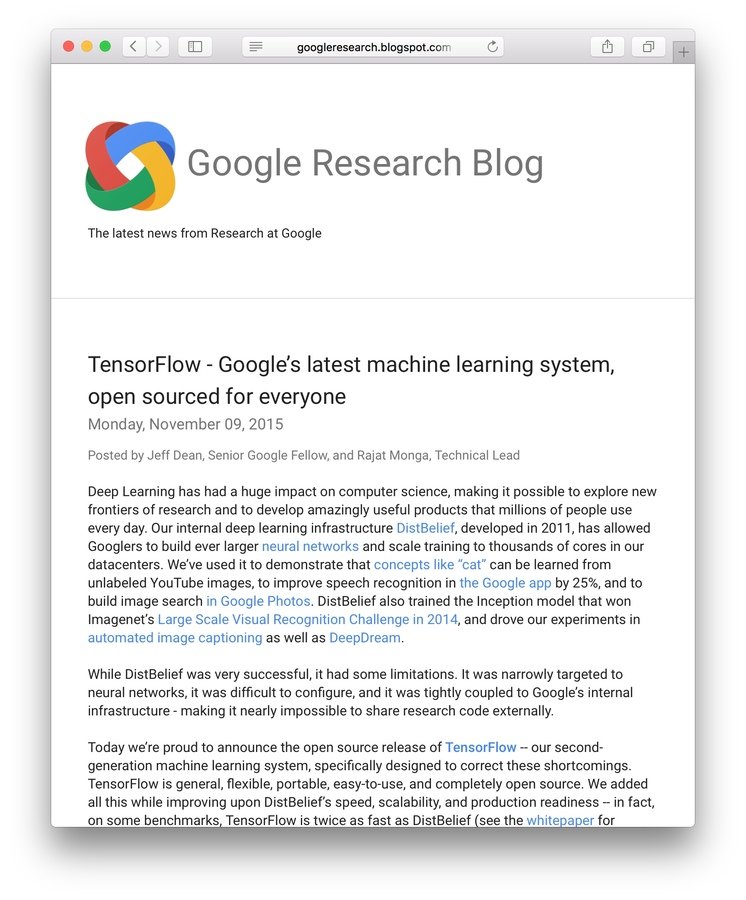TensorFlow
A Brief Introduction
History
Basics+Demo
Next
November 2015
Google releases an open source version to the public

Designed with massive neural nets in mind
November 2015
I start geeking out about machine learning after reading a blog post on recurrent neural networks.

I have no idea how any of this works, but it's exciting!
December 2015
I still don't even know which questions to ask

Data Science guild is forming
Literally Today
I know a few things about TensorFlow

I'll share what I know and hand-wave the rest
How It Works™
Models are constructed as computational graphs

Nodes on the graph are "Ops"
Edges represent Tensors (i.e. typed multi-dimensional arrays)
Manages the environment for executing ops in a graph

Specifies which device executes part of all of a graph
Each session has one graph
Each graph may be run in multiple sessions
Building a Graph
Done in some "front-end" language

Python
C++ (Yeah, right)
Running a Graph
Model inputs typically "fed" in via placeholder ops

Model outputs specified by "fetching" certain ops
Trained values as Variable ops which must be initialized before execution
Demonstration
MNIST
Dataset containing images of handwritten digits. The classification problem of converting images to digits is a common benchmark for machine learning models.
Softmax Regression
1. Aggregate evidence in support of each class ("digit")
2. Convert the evidence into a likelihood for each given class
3. Train a set of weights to optimize the output probabilities.
Basic
Summaries
TensorBoard
Example Code
Checked into the guild repo under tensorflow-mnist-examples
Tutorials
The TensorFlow project has a ton of additional docs and tutorials. This is based on the introductory tutorial.
Impressions
Pros
- Open source community
- The API is pretty extensive and built to be extended
- Graphs structure make it easy to reason about models
- Designed for deep learning, but also very generalized
- Built for performance
- TensorBoard seems promising
Cons
- You still need to know what you're doing
- There is fairly large framework
- Separation of concerns seems challenging
- Not available in JavaScript (yet)
Next Steps (for me)
- Find a slightly more practical model to build
- Try to scale up the training
- Learn to Python more better